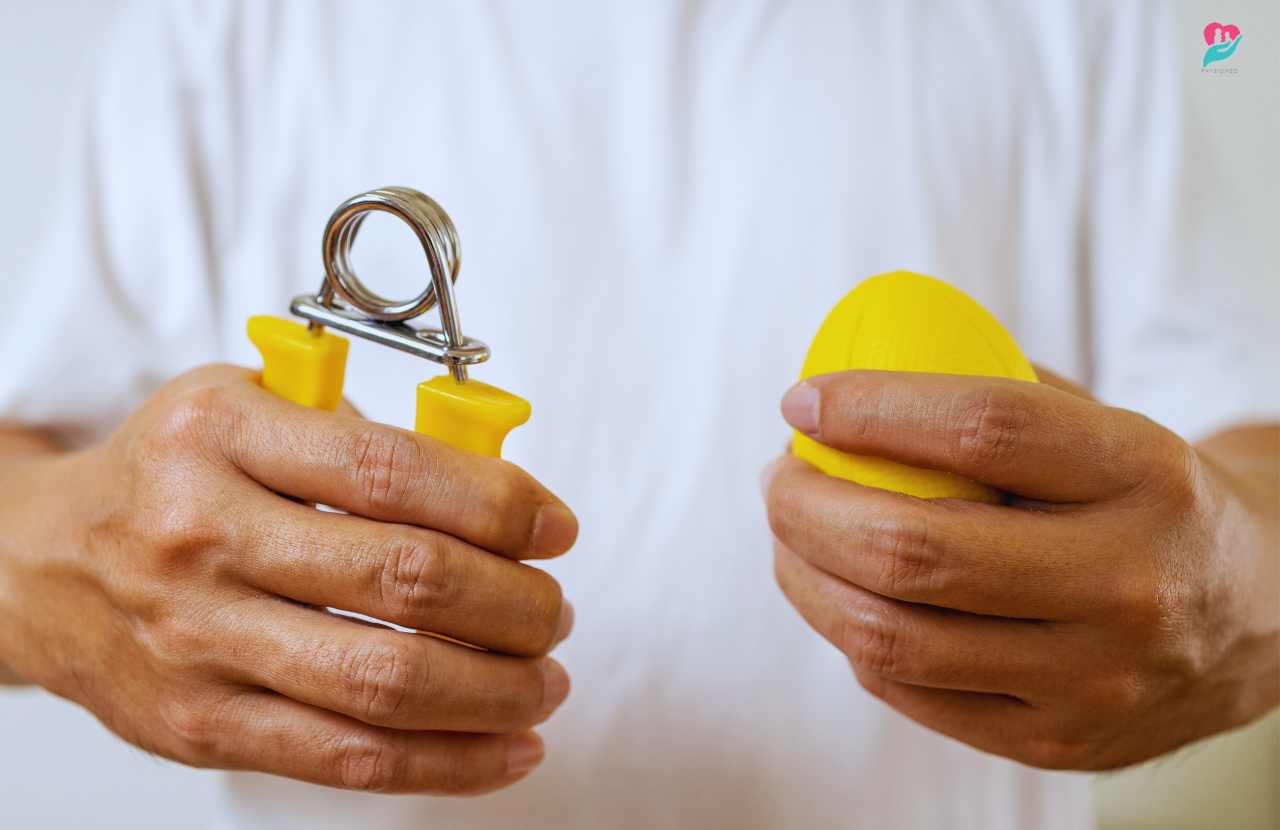Hand grippers can help with carpal tunnel syndrome to some extent. Regularly using hand grippers can strengthen the muscles in the forearm and hand, which may provide additional support to the wrist and reduce stress on the median nerve, the nerve commonly affected in carpal tunnel syndrome. However, hand grippers alone may not be a comprehensive solution for treating carpal tunnel, and individuals with symptoms should seek advice from a medical professional for a proper diagnosis and an appropriate treatment plan, which may include exercises, stretches, ergonomic changes, and other interventions tailored to their specific condition.
Do grip strengtheners help carpal tunnel?
Grip strengtheners can be helpful in some instances of carpal tunnel syndrome, but they are not a standalone solution and should be used as part of a comprehensive treatment plan.
Carpal tunnel syndrome is a condition that occurs when the median nerve, which runs from the forearm to the hand, becomes compressed or irritated as it passes through the carpal tunnel in the wrist. This compression can lead to pain, numbness, tingling, and weakness in the hand and fingers.
Grip strengtheners, like hand exercise devices or stress balls, can help improve the strength and flexibility of the hand and forearm muscles. Strengthening these muscles can support the wrist and help alleviate mild symptoms of carpal tunnel syndrome. However, grip strengtheners are not likely to address the root cause of the condition or cure it entirely.
In a comprehensive treatment plan for carpal tunnel syndrome, grip strengtheners may be combined with other therapies, such as:
- Rest and activity modification: Reducing or modifying activities that worsen symptoms can help alleviate pressure on the median nerve.
- Wrist splints: Wearing a wrist splint at night can keep the wrist in a neutral position and reduce pressure on the median nerve.
- Anti-inflammatory medications: Nonsteroidal anti-inflammatory drugs (NSAIDs) can help reduce inflammation and pain in the wrist.
- Ergonomic adjustments: Changing your workspace or daily activities to reduce wrist strain can be beneficial.
- Physical therapy: Specific exercises and stretches targeted at the wrist and forearm can improve flexibility and reduce symptoms.
- Corticosteroid injections: In some cases, corticosteroid injections may be recommended to reduce inflammation around the carpal tunnel.
- Surgery: For severe or persistent cases of carpal tunnel syndrome, surgery to relieve pressure on the median nerve may be necessary.
What are the benefits of using a hand gripper for Carpal Tunnel Syndrome?
Hand grippers are often used in a rehabilitation or exercise program for certain hand and wrist conditions, including carpal tunnel syndrome. However, their effectiveness may vary depending on the individual and the severity of the condition. Here are some potential benefits of using hand grippers for carpal tunnel syndrome:
Strengthening hand and forearm muscles
Hand grippers are designed to work on the hand and forearm muscles. Regular use of hand grippers may help strengthen these muscles, improving overall hand function and potentially alleviating some symptoms of carpal tunnel syndrome.
Improved grip strength
People with carpal tunnel syndrome may experience weakness in their grip due to median nerve compression. Hand grippers may help enhance grip strength, benefiting various daily activities.
Increased blood circulation
Hand gripper exercises can promote blood flow to the hand and wrist area, which may aid in reducing inflammation and promoting healing.
Occupational therapy
Hand grippers can be a part of occupational therapy for individuals with carpal tunnel syndrome. Occupational therapists may recommend specific exercises, including gripper exercises, to help manage symptoms and improve hand function.
Rehabilitation after surgery
In some cases where carpal tunnel syndrome is severe and requires surgical intervention, hand grippers may be used during the rehabilitation process to strengthen the hand and wrist after the procedure.
What muscles do grip strengtheners work?
Grip strengtheners primarily target the muscles in your forearm and hand. Several muscles are involved in gripping and controlling the hand, and using grip strengtheners can help develop and strengthen these muscles. The key muscles worked by grip strengtheners include:
- Flexor Digitorum Profundus: This muscle flexes the fingers, helping you make a fist or grip objects tightly.
- Flexor Digitorum Superficialis: This muscle assists in flexing the fingers and is involved in activities that require grasping and holding objects.
- Flexor Pollicis Longus: This muscle is responsible for flexing the thumb, which is essential for a strong grip.
- Adductor Pollicis: This muscle brings the thumb toward the palm, contributing to a strong grip.
- Opponents Pollicis: This muscle allows you to oppose the thumb with your fingers, facilitating precise movements and grip.
- Interossei Muscles: These muscles are located between the metacarpal bones and control finger movements and gripping.
- Lumbrical Muscles: These small muscles also play a role in finger and grip control.
Final Words
In conclusion, hand grippers can improve grip strength and forearm muscles, but there is limited evidence suggesting that they directly alleviate or prevent carpal tunnel syndrome. Carpal tunnel syndrome is a complex condition caused by compression of the median nerve in the wrist, and its development is often linked to repetitive hand movements and poor ergonomics. While hand grippers may offer indirect benefits by strengthening the surrounding muscles and promoting overall hand health, they should not be considered a standalone solution for carpal tunnel relief. It is crucial to address the root causes of carpal tunnel syndrome through proper ergonomics, rest, and targeted exercises prescribed by medical professionals. If you suspect you have carpal tunnel syndrome or experience persistent symptoms, it is essential to seek medical advice for a comprehensive and tailored treatment plan.

